
Company Registration no: RC000886
CIM and its subsidiary companies
Report and Financial
Statements
Year ended 30 June 2023

CIM | Report and Financial Statements 2
Contents
Directors’ report 3
Legal and administration information 10
Independent auditor’s report 12
Consolidated profit and loss account 15
Consolidated balance sheet 16
Consolidated cash flow statement 17
CIM balance sheet
18
Notes forming part of the financial statements 19

CIM | Report and Financial Statements 3
Directors’ report
For the year ended 30 June 2023
The Directors present their report together with the financial statements of the Chartered Institute of Marketing (CIM) for
the year ended 30 June 2023. This report is prepared in accordance with CIM’s Constitution and its Royal Charter.
As the organisation emerged into post-covid normality, it became clear that a fresh approach and strategy was required if
the growth aspirations desired by both the Board and the Executive would be achieved. In December 2022, it was
determined that this fresh strategy would break the mould of the traditional three-year planning cycle and, instead, adopt a
seven-year strategy that would take CIM up to June 2030. Every Board member was individually interviewed and, combined
with insights from the Executive, the concepts of this fresh strategy were approved in March and the full strategy, together
with the budget for the first year of this strategy, were approved in April 2023.
This year CIM was operating towards a breakeven budget and, while the budgeted revenue was not achieved, with
initiatives coming to bear, new products being launched and the careful control of costs, June 2023 saw a strong finish to
the financial year and overall, a satisfactory year end group net surplus of £208k was delivered.
The lifeblood of a professional body is to remain relevant, and the launch of CIM’s seven new intermediate-level open
training courses in AI is just such an example. These courses are designed to empower delegates with cutting-edge
knowledge and practical skills in the potential and application of AI. Another example is the launch of the suite of Specialist
Awards providing participants with in-depth expertise in focused areas of digital marketing.
The membership census that was carried out in October 2022 was the first opportunity since the pandemic for CIM to
engage with our total membership base, and the response indicated that there was a need for CIM to take stock of how
effectively our proposition was landing. This in turn led to a broader reality check and it was clear that if CIM was to achieve
its true potential, then this would require a whole new approach, and the seeds of the fresh strategy were born. During the
second half of this financial year, considerable time and effort was invested in determining what this fresh strategy would
look like. Strategic shifts were identified, enablers were established, and in total twelve separate project teams were created
to transition the organisation and align it behind a clear purpose with aspirations linked not only to CIM itself, but also to the
profession of marketing as a whole, as per the Objects of our Charter.
The need to continue to adapt has never been stronger, and this fresh strategy comes at a time when our professional
marketing competencies need to be updated, and our suite of qualifications are also due for review, so the momentum for
change has never been stronger. This year our undergraduate competition (The Pitch) was joined by our inaugural
postgraduate competition (The Challenge) and, going forwards, both undergraduates and postgraduates will be competing
in the same competition.
Investment in reducing our technical debt and improving the Moor Hall site continues to ensure that we are able to deliver
an exemplary customer experience both virtually and physically when people come to the site. Our work overseas has also
continued, with a joint event taking place in Sydney promoting our partnership with the Australian Marketing Institute and,
after such a difficult period, it was a real delight to see 400 CIM graduates being honoured by the British High Commissioner
at their Graduation in Sri Lanka. CIM retains its position as Vice Chair of the European Marketing Confederation that
currently consists of 12 countries, with separate forums being held in Lisbon and Vilnius. Wherever we go we are
recognising a growing appreciation that professional marketing makes the difference to business performance, and it is vital
that CIM is seen to support and deliver the difference in marketing.
The Directors would like to thank all staff and volunteer members for their unfaltering support and efforts in delivering the
Objects of CIM during this continuingly difficult operating environment. CIM now has a clear aspiration for both the
organisation and the marketing profession over the coming years, and this will be cascaded down amongst our stakeholders
and communities across the globe over the coming months so that we are all fully aligned in how we can help to continue to
deliver on the Objects of our Charter.
Constitution
CIM is incorporated by Royal Charter, which was awarded on 7 February 1989. It is governed by its Constitution comprising
its Charter, Bye-laws, General Regulations and Board Regulations.
Governance, structure, and management
The Board of Directors is the governing body for CIM and determines the overall direction and development of the
organisation through good governance and effective strategic planning.

CIM | Report and Financial Statements 4
Statement of directors’ responsibilities
The Board of Directors is responsible for preparing the annual report and financial statements in accordance with UK
Generally Accepted Accounting Practice. CIM’s Royal Charter and Bye-laws require the Directors to prepare financial
statements for each financial year which give a true and fair view of the state of affairs of CIM and of the income and
expenditure for that year. In preparing those financial statements the Directors are required to:
• Select suitable accounting policies and then apply them consistently;
• Make judgements and estimates that are reasonable and prudent;
• State whether applicable UK Accounting Standards have been followed, subject to any material departures
disclosed and explained in the Financial Statements;
• Prepare the financial statements on a going concern basis unless it is inappropriate to presume CIM will continue.
The Directors are responsible for keeping proper accounting records which disclose with reasonable accuracy at any time
the financial position of CIM and to enable them to ensure that the financial statements comply with the Charter. They are
also responsible for safeguarding CIM’s assets and hence for taking reasonable steps for the prevention and detection of
fraud and other irregularities.
Financial statements are published on the Group’s website. The Directors’ responsibility extends to the on-going integrity of
the financial statements contained therein.
Five principal Committees operate to support the Board of Directors:
• The Strategy and Finance Committee reviews CIM’s management accounts on a monthly basis and oversees
strategy implementation;
• The Appointments and Remuneration Committee manages the process for appointments to CIM’s Board and
Committees and oversees the appointment process and terms of the CEO;
• The Audit and Risk Committee advises the Directors on risk, internal controls and financial reporting and oversees
the annual statutory audit. The Committee reviews the risk register to enable risks to be managed and minimised;
• The Constitution and Ethics Committee provides the Board with advice on CIM’s governance structure;
• The Disciplinary Committee considers complaints raised against CIM members under the Code of
Professional Conduct.
CIM has a number of connected organisations worldwide. CIM Hong Kong Limited and CIM Enterprises Limited are
consolidated in these financial statements.
The Communication, Advertising and Marketing Education Foundation (CAM) is a subsidiary of CIM. CAM is a charity, has a
separate Board and operates independently of CIM.
Objects
The Objects of CIM are:
• To promote and develop the art and science of marketing and to encourage, advance and disseminate knowledge,
education, and practical training in and research into that art and science;
• To promote and maintain high standards of professional skill, ability and integrity among persons engaged in
marketing products and services;
• To promote entry to and advancement in the profession of marketing by means of examination and other methods
of assessment;
• To provide and develop a professional organisation for marketing;
• To increase public awareness and understanding of marketing as a vital factor in business success and prosperity.
Risk management
The Audit and Risk Committee bi-annually undertakes a detailed review of the risk register which provides an in-depth
analysis of the exposure to high level risks. The risks are covered under six categories:
• Strategic
• Financial
• Operational

CIM | Report and Financial Statements 5
• Compliance and Legal
• People
• Other
The scoring system rates each identified risk on the likelihood and severity of occurrence. Each risk is assigned to a member
of the Executive for management and monitoring; this is either by inclusion in the appropriate procedures, monthly reports,
management accounts or contained in individuals’ objectives.
The Board of Directors review new and high-rated risks at each quarterly meeting and receives a report from the Audit and
Risk Committee to aid their annual review and discussion of the full risk register. The Board is ultimately responsible for
ensuring that risks are determined, reviewed, and managed.
Looking forward, the increasing inflation rates in the UK and geopolitical instability in our largest overseas market (Sri
Lanka) has increased the financial risk profile across a number of areas of the business. This has been factored into the
budget planning process and will be monitored throughout the year to enable mitigating actions to be taken to ensure the
businesses ongoing financial stability.
Climate Change and Sustainability, Cyber security and AI remain as key risk areas for CIM to embed a robust proactive plan
that pre-empts both our clients expectations as well as supporting our own strategic goals.
Achievements and performance:
Qualifications
The anticipated decline in qualification bookings for the year ended 30
th
June 2023 following an increased individual focus
on learning during lockdown did occur with a year-on-year revenue reduction of £275k. The economic and political unrest
in markets such as Sri Lanka and Sudan also contributed to this. Other challenges include the lack of employer funding for
qualifications which is around 30% lower than it was in 2019/2020.
Despite the decline, the projections for 2023/2024 are positive with anticipated growth through greater engagement with
university students through the Accredited Degree Programme and revenue from CIM’s role as an End Point Assessor
Organisation (EPAO). In addition, CIM has launched a series of five Specialist Awards with a digital focus to meet the
challenges presented by changes in Learner Buying behaviour favouring shorter bite size online study. Many of these
initiatives, which focus on developing and growing new revenue streams in the learners space, have been made possible by
recruiting additional resource in the partnership and qualifications development area.
Work is now being undertaken to develop a revised set of marketing competencies which will underpin the development of
a revised qualification suite for launch in late 2023. These will also be the focus of discussions with other national marking
institutes across the globe to both support existing international reach and build relationships in new markets such as China
& Vietnam.
Partnership relationships are continuing to be developed to create awareness across certain market segments, most notably
in the pre-career stage marketer where CIM’s relationship with Pearson will gain awareness in the 16-18 year old market
with the launch of a ‘T’ Level for marketing in Sept 2025.
Membership
We ended June 2023 with a membership of 24,814, which is a 3% decline on the previous year. This reduction represents a
slowing from our 2022 decline, which is testament to the business’s efforts in improving our membership experience during
a challenging year. Our membership remains a 70/30 split between the UK and abroad, and our professional members
constitute 54% of our total. Whilst acquisition and retention are 6% below budget for professional membership, our
studying member acquisition was 13% below where we expected to end the year. Just over 50% of membership are
registered on to the CPD programme, and 22% of our professional member community are Chartered Marketers, which is a
growth of 3% since 2022.
In October 2022 we launched our first Census, surveying our membership on their requirements of CIM, as well as a cohort
of marketers who were non-members. We received a 10% response rate from our members (2,612) and 444 responses
from non-members. This ground-breaking Census gave us great insight into the respondents’ roles, careers, and their
thoughts on the marketing profession, providing us with valuable information from which we have built a continuous
improvement plan for 2023/24 which will see our membership offering evolve to better suit the large cross-section of the
marketing community we serve. Through greater understanding of our members, we aim to reverse our decline and end the
next year with growth in our member community.

CIM | Report and Financial Statements 6
Looking forward, the difficult global economic situation will continue to place additional pressure on our membership growth,
and we will continue to closely monitor the situation, with the aim that our improved offering will negate this. With a broader
set of qualifications that we will be offering, we also hope to return to growth in our studying area of membership. The
evolution of our professional membership offering supports an ambitious retention improvement goal of 89% in 2023/24 (80%
in 2022/23). With plans for increasing our marketing activity and investigating pro-active opportunities for members
acquisition, we aim to end 2023/24 with an overall membership of circa 27,000 representing an increase of 9%.
Training
The training business continues to be a significant revenue and contribution driver for the organisation, with revenue growth
up on the previous year by £183k. There has been continued investment in e-learning courses which has provided greater
customer choice of delivery mode across an increased range of marketing topics. Revenue from e-learning now accounts for
10% of all Open Training bookings. The shift to virtual and online made during the pandemic has also made the training
offer more accessible, with an increasing number of delegates now coming from outside of the UK. International bookings
accounted for 8% of total Open training revenue (predominantly coming from Europe and the Middle East).
The Open Training portfolio consists of c.100 different programmes. These are constantly reviewed and refined based on
customer feedback and market changes. While there have been many new courses developed and launched during the
year, the Google Analytics Four programme has generated significant demand and has led the revenue rankings.
Traditionally, new subject courses are introduced in isolation and tested before adding more similar programmes. However,
this has not been the case with AI. The level of business and public debate and uncertainty around the area meant that a
decision was made to launch a whole new category of courses and five AI-specific courses were launched simultaneously.
Even though these were launched in the latter stages of the financial year, initial booking levels and feedback are
encouraging. The overall delegate volumes for the year increased by 5% over the prior year to 5,081. Satisfaction scores for
Open Training have also increased year on year, with Net Promoter Score up 7.3 points to 44.9, and business relevance and
application of new skills in the workplace up 5.2 percentage points to 92.2% and 4.3 percentage points to 95.6%
respectively.
The majority of the growth for training came from the Business Solutions offering, creating customised capability
assessments and development programmes for organisations. The activity undertaken with the c.150 clients over the year
ranged from simple 1-day team training all the way through to global capability change programmes. This area of CIM’s
business is building well and the internal team will expand in 2023/24 in line with the growth in demand.
A new offering was also launched in the year called ‘Company Affiliate’. This is a 12-month relationship which unlocks
specific benefits for organisations wanting to develop their teams. These include group membership (where their employees
become members, paid for by the organisation), discounts on training and a single point of contact for all professional
development support. Although in its infancy, initial uptake and interest have been positive.
Moving forwards, we will continue to refine the existing portfolio, introduce additional online and partnership programmes,
as well as build on the momentum gained in 2022/23 in attracting a broader international audience. We will continue to
adapt appropriately, including testing different delivery models and a phased return to face to-face for selected courses.
Conference Centre
CIM Moor Hall had a slow start to the financial year with Q1 and Q2 underperforming against budget whilst Q3 was steady
and Q4 was ahead of budget which resulted in a strong finish to the end of the year. A change in leadership halfway
through the year meant that Moor Hall was able to focus its business performance on its key market of learning and
development within the professional setting of Moor Hall, and ensured that leisure distractions were no longer hindering the
progress of the site.
The Meeting and Events Industry, which Moor Hall predominantly works within, has seen major changes after Covid with
organisations operating in a very different way. Team away days are now team together days and the site has been able to
benefit from this change by providing a location to deliver this. A result of this change in business operations is that
companies are hosting larger events in person, while the smaller 8-10 person meetings have remained virtual.
Investment in the technology and Audio Visual equipment in the meeting rooms has enabled CIM Moor Hall to adapt to the
hybrid way that people operate. It has enabled the site to still deliver face to face meetings whilst attracting companies who
have international and national employees by having the infrastructure to support this. Identifying options for team building
and working with organisations in enabling individuals and teams to come together has resulted in a strong performance
over the summer months (April – July).

CIM | Report and Financial Statements 7
Recruitment still proves to be a challenge in hospitality, and this has resulted in resources being stretched and continuous
training having to be repeated throughout the year.
Marketing
The past year has been one of success for our organisation, characterised by numerous accomplishments and strategic
initiatives. Our key activities include events, podcasts, members' exclusive content, social media presence, advertising and
innovations. This summary presents key milestones and outcomes during this financial year, showcasing our dedication to
growth and excellence.
We have strengthened our brand's voice and increased our media exposure on topics of great importance to our members
and the larger marketing community. As a result, we secured more than 460 media features in prominent publications such
as the BBC, Campaign, Forbes, Marketing Week, Sky News and The Guardian. Additionally, we expanded our global
presence by announcing new partnerships and attending events that garnered media coverage in various countries,
including the USA, Ghana, Uganda, Sri Lanka, the UAE and India.
We chaired two debates in the House of Commons. These debates focused on the highly relevant topics, of the impact of
artificial intelligence and the metaverse on the marketing profession. Both proved valuable to members, with CIM reports
and thought leadership based on insight from these events.
Our podcasts have experienced substantial growth in engagement, available to both members and non-members, enabling
us to extend our voice beyond our current member base. The podcasts delivered over 53,723 downloads throughout the
year, further enhancing our industry influence. We are equally delighted with our social media community's expansion,
reaching an impressive milestone of over 340,000 followers across a number of platforms.
Our member exclusive webinars continue to grow, with over 6,500 total attendees within the year.
Our research and thought leadership went from strength to strength, working with leading global brands such as Boots,
Reuters, and Microsoft on various research projects throughout the year, driving widespread awareness and engagement in
national newspapers and our membership base.
As part of our commitment to assist marketers throughout their career journey, we have extended our support to
postgraduate students through the renowned student competition "The Pitch". Following a successful trial event organised
by CIM Scotland and sponsored by Highland Park, a leading global Whisky brand, one of the participating teams was offered
interviews for roles in a local marketing agency soon after the final. This year we intend to host a global competition for
undergraduates and postgraduates, enabling them to gain valuable employment skills and a glimpse of their potential future
in the marketing field.
We continued to champion senior marketers through the launch of our global CMO75 report, which featured insight from
some of the top CMOs across the world and included brands such as NatWest, Deutsche Bank, Decathlon, Hays, VCCP and
Cancer Research UK.
At the start of the calendar year, we introduced a new design framework, ensuring a consistent brand identity across all our
touchpoints. This initiative has strengthened our brand recognition and cohesion across various channels.
The implementation of dynamic advertising for all our products led to a notable increase in website traffic, demonstrating
the effectiveness of our advertising efforts. Timely paid campaigns, including PPC, Display advertising and Spotify ads,
played a crucial role in supporting our business objectives.
Our commitment to diversity and industry relevance was evident through the introduction of Company Affiliates, New
Specialist Awards, and our New L7 Sustainable qualification. These additions cater to various interests and requirements
within the marketing industry.
This year has been one of significant achievements for our organisation. Our dedication to providing value to our members,
promoting industry discussions and embracing innovation has resulted in a successful and eventful period. As we move
forward, we remain committed to excellence, growth, and sustainability, with a continued focus on empowering marketing
professionals.
Our People
The past year has seen CIM face a complex and dynamic set of challenges and external factors including economic
conditions, a competitive recruitment market and changing employment legislation which have all continued to shape our
HR practices. Attracting, developing and retaining talented people to the organisation has required agile solutions and our
employer branding has become a critical factor in attracting talent to CIM. We have increased our use of platforms, such as

CIM | Report and Financial Statements 8
Glassdoor, to showcase our company culture and employee experience, and this has helped to increase the number of
candidates applying for roles and has also enabled us to attract senior talent through our own search processes. Compared
to 2021/22, we have seen improved levels of retention, with employee satisfaction and engagement remaining high.
Embracing hybrid and remote working has allowed us to tap into a wider talent pool and fill roles that were previously
challenging, such as in the tech and IT sectors.
The past few years have seen radical changes to working practices, and expectations of flexible and hybrid working have
continued to reshape the workforce landscape. However, remote working can impact engagement, and we have had to find
ways to keep employee connections alive and strengthen our company culture. Like many organisations, we continue to
navigate this, aiming to balance the benefits of flexibility with the need for team collaboration in our physical workspaces,
whilst also focusing on employee wellbeing.
With CIM’s ambitious plans for growth, we will need to adapt to the technological development of our business and
changing roles and the introduction of AI in the workplace will widen skills gaps. To future-proof our workforce and
promote upskilling, we have launched a new learning platform facilitating learning in the flow of work, providing our people
with knowledge that is personalised, relevant and timely.
Looking to 2023/2024, HR will continue to be forward thinking and adaptable, monitoring and anticipating external factors
to align our activities to the evolving needs of the business. Our HR data-driven insights will continue to inform our products
and shape our employee experience.
Sustainability (Environmental, Social and Governance)
CIM remains committed to improving its sustainability credentials. This year has seen the introduction of Carbon Literacy
accreditation being rolled out across the organisation, as well as being incorporated within the staff induction programme
for all new joiners. Options have been reviewed to carry out a carbon footprint audit to determine what CIM’s baseline and
what will follow will be a series of actions that will be made to reduce this footprint to recognisable targets. An update to
CIM’s Sustainability hub on the website and a paper will be launched early in the new financial year highlighting the skills
gaps in sustainability marketing. In the meantime, we are continually improving our environmental performance as an
integral and fundamental part of our business strategy and operating methods.
As well as focusing on our own operations, CIM is also committed to supporting society and the broader marketing
community through promoting responsible and sustainable marketing practices.
Financial Report
Overall Results
The consolidated financial statements include the continuing subsidiaries of CIM: The Communication Advertising and
Marketing Education Foundation (CAM), a charity limited by guarantee, CIM Hong Kong Limited and CIM Enterprises
Limited.
Revenue of just under £14 million is 2.6% higher than last year with improvements in Training and Conference Centre
driving the increase.
Qualifications revenue showed a 8% reduction against 2022 down to £3.1m, mainly due to the lower level of assessment
bookings. Membership revenue showed a year-on-year decline of 5.7% to £3.7m. Training revenue continues to rise with a
4% increase on 2022, taking it to £4.9m. The Conference Centre revenue increased by £667k to £2.2m which was a 43%
increase on 2022.
Direct costs of sales at £7.3m were up by 11% resulting in a gross profit of £6.6m which was a decrease against the prior
year. Administrative expenses at £6.5m increased by 4% compared with last year.
As a result, CIM reported a consolidated operating profit before changes to impairment of £153k (2022: £817k).
The Directors have considered the market value of the investment property as at 30 June 2023 and, following the valuation
received in July 2023, have revalued the investment property to a value of £250,000. The change in the fair value of the
investment property of a gain of £50,000 has been credited to the profit and loss account. (2022: loss of £350,000).
After accounting for the impairment and net interest payable, there was a profit before tax of £208k (2022: £457k).
The defined benefit pension scheme showed an accounting surplus of £4.3m at the year end; although this asset has not
been and cannot be recognised in accordance with accounting standards. This compares to a surplus of £5.7m last year.
The main reason for the decrease in surplus over the year is due to lower than expected investment returns over the period,

CIM | Report and Financial Statements 9
which has been partially offset by a decrease in market views on long term inflation. This has been further offset by an
increase in corporate bond yields which led to a decrease in the value of the liabilities.
Balance sheet
The total net worth of CIM as at 30 June 2023 was £4.99m (2022: £4.8m) with unrestricted reserves accounting for £4.3m
(2022: £4.1m). The restricted reserves of £685k relate to CAM and are required to be utilised for its charitable purposes. As
its previous qualifications have ended, CAM continues to work on its proposition and strategy.
Capital expenditure of £1m was slightly lower than the prior year (2022: £1.1m) and related primarily to investment in the
new CRM system as part of the programme to reduce our technical debt.
Net current liabilities were £3.1m (2022: £2.4m). This includes the current portion of the Santander loan of £0.227m, which
is repayable within 5 years, £2.4m of deferred income (down £0.1m on last year) and Trade Creditors £0.9m (down £49k on
last year). Also, Trade and other Debtors were £0.6m (the same as last year).
Cash at bank and in hand at the end of the year was £579k. There is also the £1.5m Government backed Coronavirus
Business Interruption Loan Scheme (CBILS) overdraft facility which was in place.
Summary and Outlook
In summary, the Board is very pleased with the progress CIM has made in 2022/2023 in maintaining financial stability as
well as embracing the elements that will deliver growth – both now and in the future. We are also very excited about the
implementation of the fresh strategy over the coming years and recognise how important this next year of transition will be.
We have full confidence in the Executive to deliver on this transition, and this remains an exciting time of opportunity for
CIM as it adapts to meet the challenges of the future.
The Board wishes to thank the CEO, the Senior Management Team and all CIM staff, our membership and the wider
stakeholder community for their commitment and dedication to maintaining a strong professional body that is robust, agile,
and capable.
June Dennis
Chair of the Board of Directors
Date: 10 November 2023
E-SIGNED by June Dennis
on 2023-11-16 17:09:46 GMT

CIM | Report and Financial Statements 10
Legal and administration information
For the year ended 30 June 2023
The Board of Directors
Dr June Dennis DipM FCIM Chartered Marketer - Chair
Michael Lynch DipM FCIM Chartered Marketer – Vice Chair
Andrew Yuille DipM FCIM Chartered Marketer – Vice
Chair
Gina Balarin FCIM Chartered Marketer
William Burton DipM FCIM Chartered Marketer (From
December 2022)
Matilda Crossman DipM MCIM FCCA (Until December 2022)
Nadi Dharmasiri DipM FCIM Chartered Marketer (Until
December 2022)
Mark Durkin FCIM (Until January 2023)
Natalie Gross DipM FCIM (Until December 2022)
Kate Hamilton DipM Hon FCIM Chartered Marketer (Until
December 2022)
Fiona Hawkins FCIM
Dr Dawn Holmes FCIM Chartered Marketer
Gus MacIver ACIM FCMA
Dr Ruchitha Perera DipM FCIM Chartered Marketer
(From December 2022)
Vice Presidents
Andrew Cosslett Hon FCIM
Fiona Dawson Hon FCIM
Martin Glenn Hon FCIM
Lord Michael Grade Hon FCIM
Strategy and Finance Committee
Gus MacIver ACIM FCMA – Chair
Dr June Dennis DipM FCIM Chartered Marketer
Professor Mark Durkin FCIM (Until January 2023)
Michael Lynch DipM FCIM Chartered Marketer (From April
2023)
Andrew Yuille DipM FCIM Chartered Marketer
The Appointments and Remuneration Committee
Andrew Yuille DipM FCIM Chartered Marketer – Chair
Carol Ashton Chartered MCIPD
William Burton DipM FCIM Chartered Marketer (From April
2023)
Dr June Dennis DipM FCIM Chartered Marketer
Richard Doe DipM FCIM (Until October 2022)
Dr Dawn Holmes FCIM Chartered Marketer (Until April
2023)
The Audit and Risk Committee
Gus MacIver ACIM FCMA – Acting Chair (From March
2023)
Matilda Crossman DipM MCIM FCCA (Until December
2022)
David Maltby FCIM
Kevin Smith FCCA
Johnny Smoes FCIM Chartered Marketer (From
December 2022)

CIM | Report and Financial Statements 11
The Constitution and Ethics Committee
Helen Anderson FCIM Chartered Marketer
Andrew Chalk DipM FCIM
Dr Dawn Holmes FCIM Chartered Marketer (Until April
2023)
Michael Lynch DipM FCIM Chartered Marketer (From April
2023)
Matt Waters ACIM Chartered Marketer
Regional Chairs
Marie Lake DipM MCIM - East of England
Andrea Snagg FCIM Chartered Marketer - Greater
London
Chris Gilroy FCIM - Ireland
Rachael Mabe DipM FCIM - Midlands
Kirsty Ramsey DipM MCIM - North East
Jennifer Baker MCIM - North West
Ellie Murphy FCIM - Scotland
Marie Wilcox DipM FCIM Chartered Marketer - South
East
Claire Bryant ACIM - South West & Channel Islands
Dr Gavin Davies FCIM Chartered Marketer – Wales
Claire Pryke DipM FCIM Chartered Marketer - Yorkshire
Principal Office
Moor Hall
Cookham
Maidenhead
Berkshire
SL6 9QH
Disciplinary Committee
In June 2023 the Disciplinary Committee heard a case
against a Member. The outcome was that the Member
was found to be in breach of clauses 1,3,4 and 10 of
CIM’s Code of Professional Conduct and due to the
serious nature of the allegations, was expelled from
Membership for a period of 10 years.
Auditors
MHA (MacIntyre Hudson LLP)
Victoria Court
17-21 Ashford Road
Maidstone
Kent
ME14 5DA
Banker
Santander UK plc
2 Triton Square
Regents Place
London
NW1 3AN
Solicitors
Governance Matters:
Farrer & Co
66 Lincoln’s Inn Fields
London
WC2A 3LH
Leadership Team
Chris Daly FCIM Chartered Marketer - Chief Executive
Anna D’Souza FCCA ACIM - Director of Finance,
Procurement and Risk
Maggie Jones DipM FCIM - Director of Qualifications and
Partnerships
Stu Kaley MCIM - Director of Customer Experience and
Digital
Sarah Lee-Boone Chartered FCIPD ACIM -
Director of People and Workplace
Joanne Saintclair-Abbott CG (Affiliated) - Institute
Secretary
James Sutton FCIM - Strategy and Commercial Director

CIM | Report and Financial Statements 12
Independent auditor’s report to Members of The
Chartered Institute of Marketing
Opinion on the financial statements
We have audited the financial statements of the Chartered Institute of Marketing (the ‘parent institute’) and its subsidiaries
(the ‘group’) for the year ended 30 June 2023 which comprise the consolidated profit and loss account and statement of
retained earnings, the consolidated balance sheet, the consolidated cash flow statement, the CIM balance sheet and notes
to the financial statements, including significant accounting policies. The financial reporting framework that has been
applied in their preparation is applicable law and United Kingdom Accounting Standards, including Financial Reporting
Standard 102 The Financial Reporting Standard applicable in the UK and Republic of Ireland (United Kingdom Generally
Accepted Accounting Practice).
In our opinion the financial statements:
• give a true and fair view of the state of the group’s and of the parent institute’s affairs as at 30 June 2023 and of
the group’s profit for the year then ended;
• have been properly prepared in accordance with UK Generally Accepted Accounting Practice; and
• have been prepared in accordance with the requirements of the Royal Charter.
Basis for opinion
We conducted our audit in accordance with International Standards on Auditing (UK) (ISAs (UK)) and applicable law. Our
responsibilities under those standards are further described in the Auditor’s Responsibilities for the Audit of the Financial
Statements section of our report. We are independent of the group in accordance with the ethical requirements that are
relevant to our audit of the financial statements in the UK, including the FRC’s Ethical Standard, and we have fulfilled our
ethical responsibilities in accordance with those requirements. We believe that the audit evidence we have obtained is
sufficient and appropriate to provide a basis for our opinion.
Conclusions relating to going concern
In auditing the financial statements, we have concluded that the Directors' use of the going basis of accounting in the
preparation of the financial statements is appropriate.
Based on the work we have performed, we have not identified any material uncertainties relating to events or conditions
that, individually or collectively, may cast significant doubt on the group and the parent institute’s ability to continue as a
going concern for a period of at least twelve months from when the financial statements are authorised for issue.
Our responsibilities and the responsibilities of the directors with respect to going concern are described in the relevant
sections of this report.
Other information
The other information comprises the information included in the annual report other than the financial statements and our
auditor’s report thereon. The directors are responsible for the other information contained within the annual report. Our
opinion on the financial statements does not cover the other information and, except to the extent otherwise explicitly
stated in our report, we do not express any form of assurance conclusion thereon. Our responsibility is to read the other
information and, in doing so, consider whether the other information is materially inconsistent with the financial statements
or our knowledge obtained in the course of the audit, or otherwise appears to be materially misstated. If we identify such
material inconsistencies or apparent material misstatements, we are required to determine whether this gives rise to a
material misstatement in the financial statements themselves. If, based on the work we have performed, we conclude that
there is a material misstatement of this other information, we are required to report that fact.
We have nothing to report in this regard.

CIM | Report and Financial Statements 13
Responsibilities of directors
As explained more fully in the directors’ responsibilities statement, the directors are responsible for the preparation of the
financial statements and for being satisfied that they give a true and fair view, and for such internal control as the directors
determine is necessary to enable the preparation of financial statements that are free from material misstatement, whether
due to fraud or error.
In preparing the financial statements, the directors are responsible for assessing the group and parent institute’s ability to
continue as a going concern, disclosing, as applicable, matters related to going concern and using the going concern basis
of accounting unless the directors either intend to liquidate the group or the parent institute or to cease operations, or have
no realistic alternative but to do so.
Auditor’s responsibilities for the audit of the financial statements
Our objectives are to obtain reasonable assurance about whether the financial statements as a whole are free from material
misstatement, whether due to fraud or error, and to issue an auditor’s report that includes our opinion. Reasonable
assurance is a high level of assurance but is not a guarantee that an audit conducted in accordance with ISAs (UK) will
always detect a material misstatement when it exists.
Misstatements can arise from fraud or error and are considered material if, individually or in aggregate, they could
reasonably be expected to influence the economic decisions of users taken on the basis of these financial statements.
Irregularities, including fraud, are instances of non-compliance with laws and regulations. We design procedures in line with
our responsibilities, outlined above, to detect material misstatements in respect of irregularities, including fraud. The specific
procedures for this engagement and the extent to which these are capable of detecting irregularities, including fraud is
detailed below:
• Enquiry of management, those charged with governance around actual and potential litigation and claims;
• Performing audit work over the risk of management override of controls, including testing of journal entries and
other adjustments for appropriateness, evaluating the business rationale of significant transactions outside the
normal course of business and reviewing accounting estimates for bias;
• Reviewing minutes of meetings of those charged with governance;
• Reviewing financial statement disclosures and testing to supporting documentation to assess compliance with
applicable laws and regulations.
Because of the inherent limitations of an audit, there is a risk that we will not detect all irregularities, including those leading
to a material misstatement in the financial statements or non-compliance with regulation. This risk increases the more that
compliance with a law or regulation is removed from the events and transactions reflected in the financial statements, as we
will be less likely to become aware of instances of non-compliance. The risk is also greater regarding irregularities occurring
due to fraud rather than error, as fraud involves intentional concealment, forgery, collusion, omission or misrepresentation.
A further description of our responsibilities for the financial statements is located on the FRC’s website at:
www.frc.org.uk/auditorsresponsibilities . This description forms part of our auditor’s report.

CIM | Report and Financial Statements 14
Use of our report
This report is made solely to the institute’s members, as a body, in accordance with the requirements of its Royal Charter.
Our audit work has been undertaken so that we might state to the institute’s members those matters we are required to
state to them in an auditor’s report and for no other purpose. To the fullest extent permitted by law, we do not accept or
assume responsibility to anyone other than the institute and the institute’s members as a body, for our audit work, for this
report, or for the opinions we have formed.
David Boosey BA(Hons) FCA
(Senior Statutory Auditor)
for and on behalf of MHA, Statutory Auditor
Reigate, United Kingdom
XX November 2023
MHA is a trading name of MacIntyre Hudson LLP, a limited liability partnership in England and Wales (registered number
OC312313)
E-SIGNED by David Boosey
on 2023-11-16 21:49:59 GMT
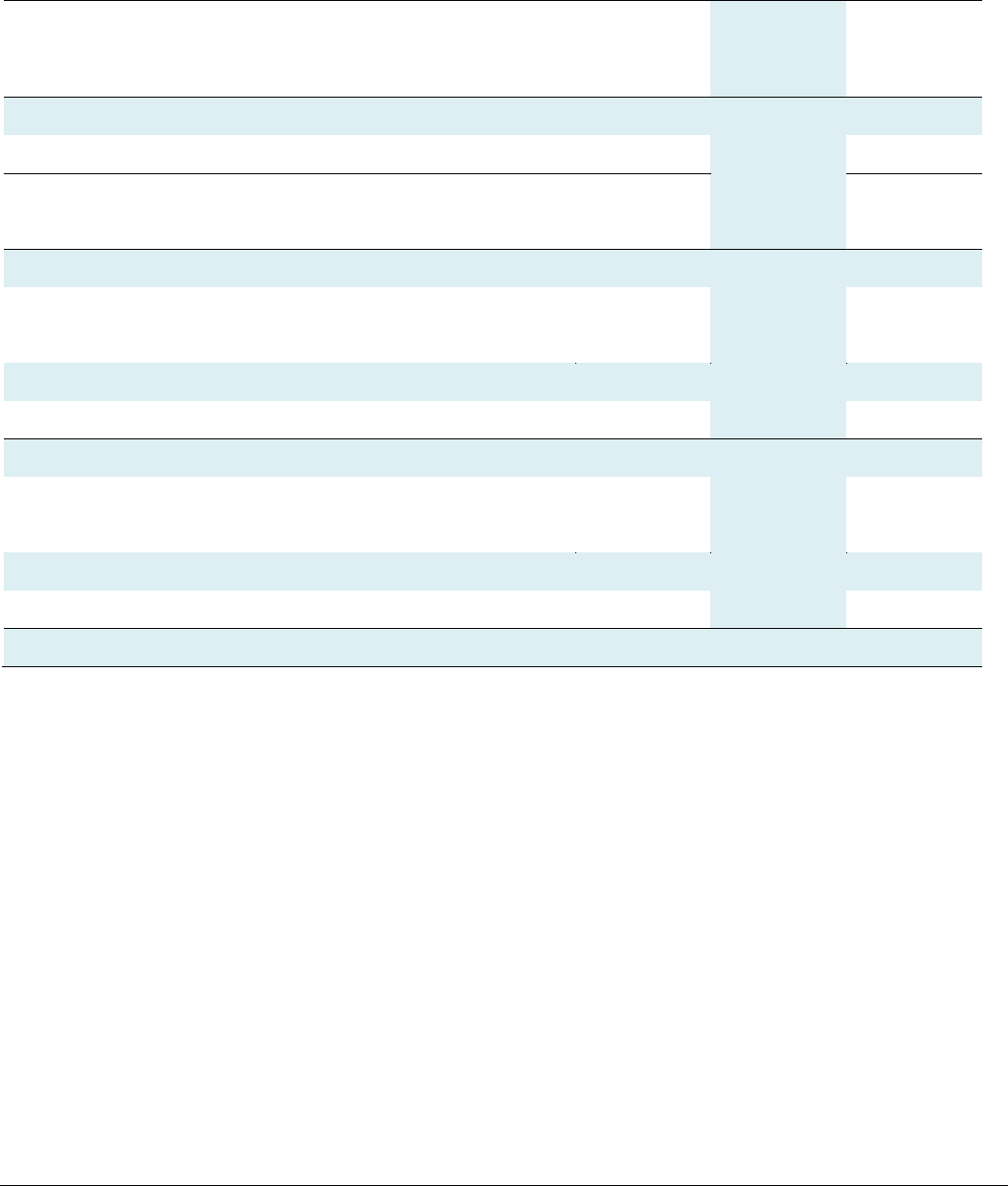
CIM | Report and Financial Statements 15
Consolidated profit and loss account
and statement of retained earnings
For the year ended 30 June 2023
Note
2023
£’000
2022
£’000
Turnover
3
13,954
13,600
Cost of sales
(7,305)
(6,535)
Gross profit
6,649
7,065
Administrative expenses
(6,496)
(6,248)
Group operating profit before changes to impairment
153
817
Gain/(Loss) on changes in fair value of investment property
10
50
(350)
Operating profit
203
467
Interest receivable
6
23
6
Interest payable
6
(18)
(16)
Profit on ordinary activities before taxation
208
457
Taxation
7
-
-
Profit after taxation
208
457
Other comprehensive income for the year:
Actuarial losses on defined benefit pension scheme
16
-
-
Total comprehensive income for year
208
457
Retained profits brought forward
4,785
4,328
Retained profits carried forward
4,993
4,785
All income and expenditure was derived solely from continuing activities. The notes on pages 19 to 30 form part of these
financial statements.
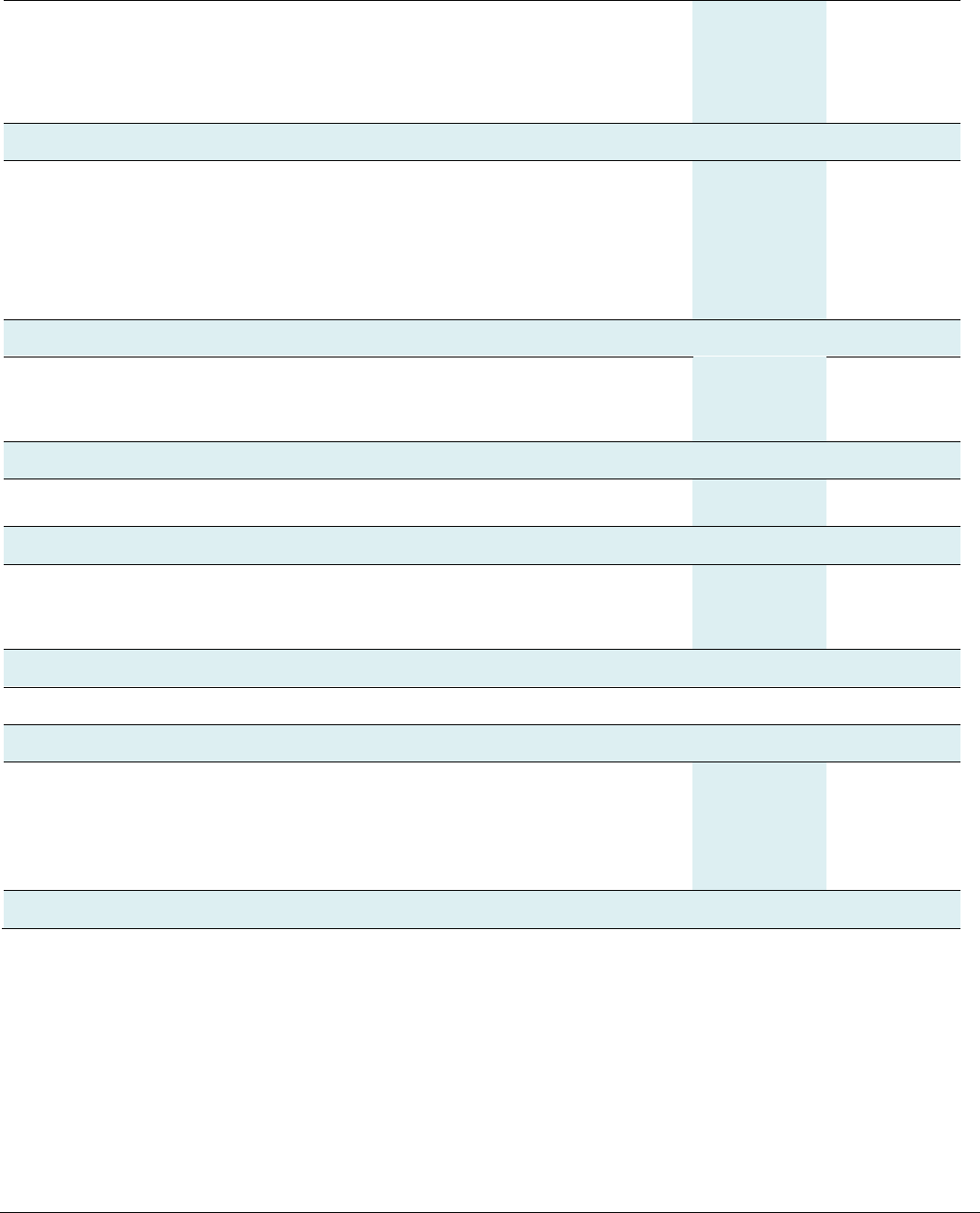
CIM | Report and Financial Statements 16
Consolidated balance sheet
At 30 June 2023
Note
2023
£’000
2022
£’000
Fixed assets
Tangible assets
9
7,868
7,233
Investments
10
250
200
8,118
6,998
Current assets
Stocks
20
20
Debtors - due within one year
11
1,010
842
Cash at bank and in hand
579
1,831
1,609
2,693
Current liabilities
Creditors – amounts falling due within one year
12
(4,734)
(5,114)
(4,734)
(5,114)
Net current liabilities
(3,125)
(2,421)
Total assets less current liabilities
4,993
5,012
Creditors
Amounts falling due after more than one year
13
-
(227)
Net assets excluding pension liability
4,993
4,785
Defined benefit pension liability
16
-
-
Net assets
4,993
4,785
Retained earnings
- CIM GROUP
4,308
4,156
- CAM – see note 1(j)
685
629
Total retained earnings
4,993
4,785
The notes on pages 19 to 30 form part of these financial statements.
These financial statements were approved and authorised by The Board of Directors on 10 November 2023.
June Dennis
Director and Chair
Date: 10 November 2023
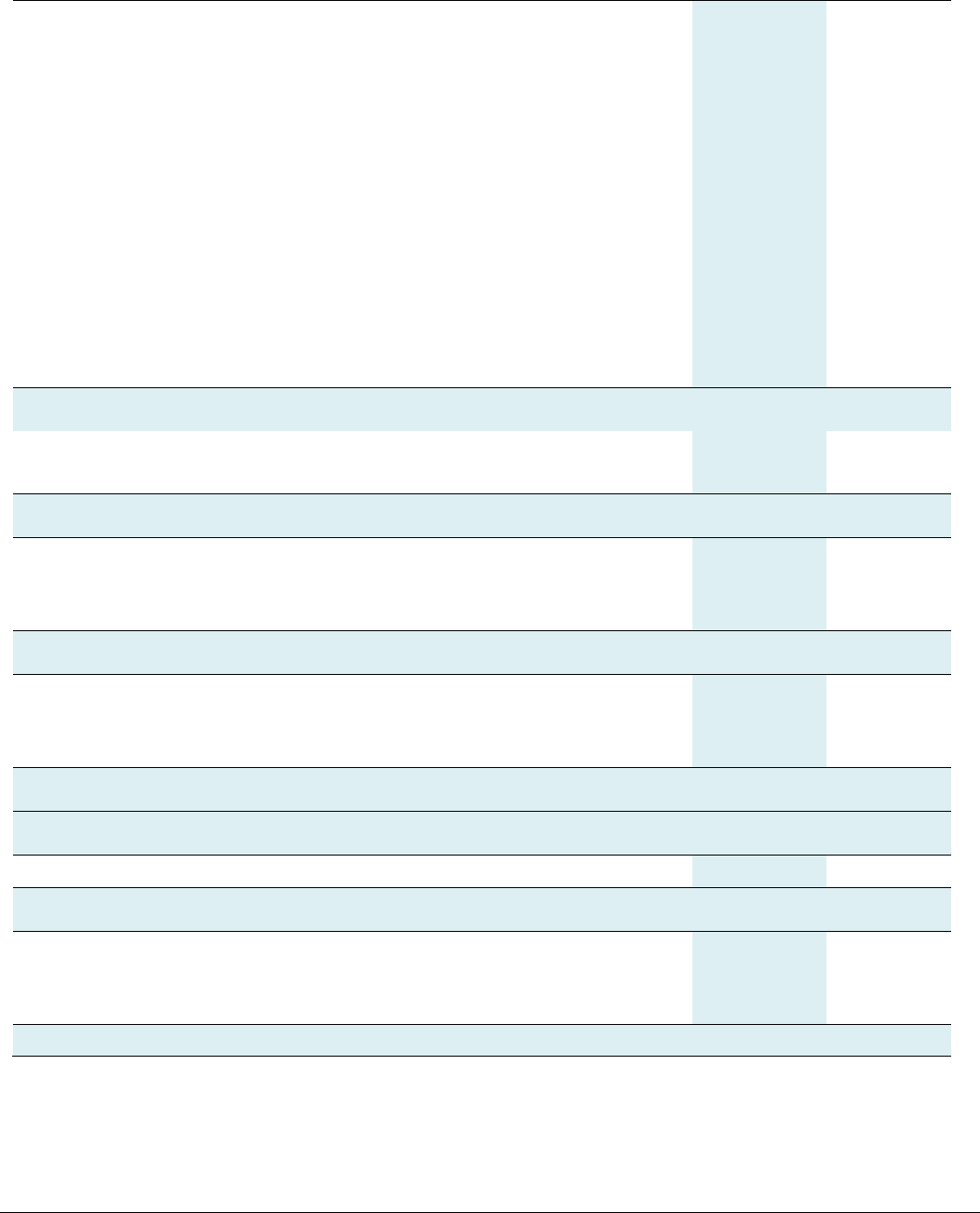
CIM | Report and Financial Statements 17
Consolidated cash flow statement
For the year ended 30 June 2023
Note
2023
£’000
2022
£’000
Cash flow from operating activities:
Profit/(Loss) for the financial year
208
457
Adjustments for:
Depreciation and amortisation of fixed assets
9
379
353
(Gain)/Loss from changes in fair value of investment property
10
(50)
350
Loss on disposal of fixed assets
-
3
Net interest (receivable)/payable
6
(5)
10
Decrease/(Increase) in:
Trade and other debtors
(168)
250
Trade and other creditors
(380)
(45)
(Increase) in stock
-
(4)
Cash from operations
(16)
1,374
Interest received
23
7
Interest paid
(18)
(16)
Net cash generated from operating activities
(11)
1,365
Cash flows from investing activities:
Purchases of tangible fixed assets
(1,014)
(1,055)
Net cash generated (used in) / from investing activities
(1,025)
310
Cash flows from financing activities:
Loan repayments
(227)
(227)
Net cash used in financing activities
(227)
(227)
(Decrease) / Increase in cash and cash equivalents
(1,252)
83
Cash and cash equivalents at beginning of year
1,831
1,748
Cash and cash equivalents at end of year
15
579
1,831
Cash and cash equivalents comprise:
Cash at bank and in hand
579
1,831
579
1,831
The notes on pages 19 to 30 form part of these financial statements.
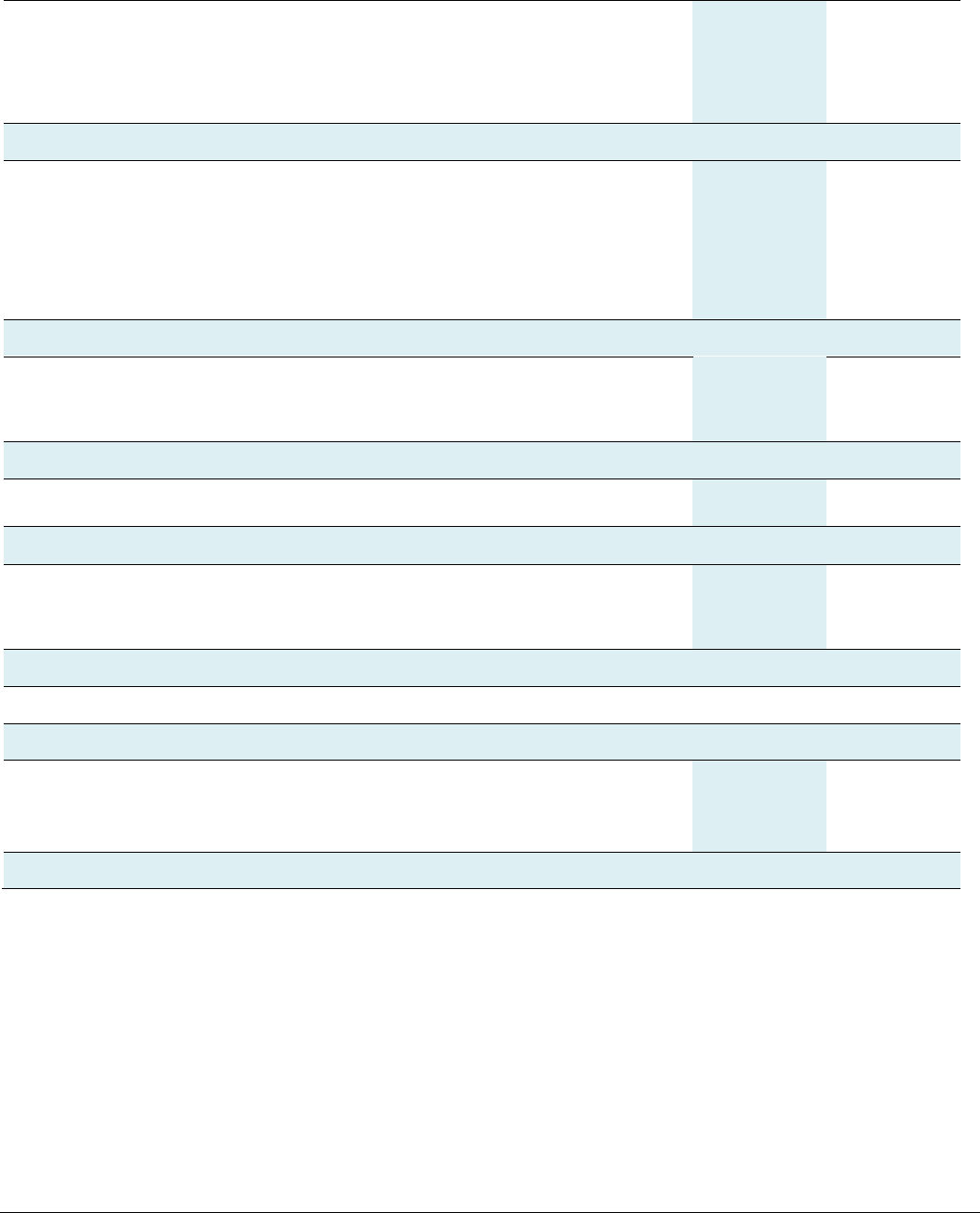
CIM | Report and Financial Statements 18
CIM balance sheet
At 30 June 2023
Note
2023
£’000
2022
£’000
Fixed assets
Tangible assets
9
7,868
7,233
Investments
10
250
200
8,118
7,433
Current assets
Stocks
20
20
Debtors - due within one year
11
1,128
955
Cash at bank and in hand
453
1,820
1,601
2,795
Current liabilities
Creditors – amounts falling due within one year
12
(4,956)
(5,299)
(4,956)
(5,299)
Net current liabilities
(3,355)
(2,504)
Total assets less current liabilities
4,763
4,929
Creditors
Amounts falling due after more than one year
13
(500)
(827)
Net assets excluding pension liability
4,263
4,102
Defined benefit pension liability
16
-
-
Net assets
4,263
4,102
Retained earnings
Profit and loss account
4,263
4,102
Total retained earnings
4,213
4,102
The notes on pages 19 to 30 form part of these financial statements.
These financial statements were approved and authorised for issue by The Board of Directors on 10 November 2023.
June Dennis
Director and Chair
Date: 10 November 2023
E-SIGNED by June Dennis
on 2023-11-16 17:10:11 GMT

CIM | Report and Financial Statements 19
Notes to the financial statements
For the year ended 30 June 2023
1. Accounting policies
a)
Basis of accounting
CIM is a company incorporated in England & Wales under Royal Charter. The address of the principal office is given on the
Legal and Administration Information page and the nature of the Group’s operations and its principal activities are set out
in the Directors’ Report. The financial statements have been prepared under the historical convention and in accordance
with the Financial Reporting Standard 102, the Financial Reporting Standard applicable in the United Kingdom and the
Republic of Ireland.
The financial statements are presented in the currency of the primary economic environment in which CIM operates, which
is the Pound Sterling and are rounded to the nearest £1.
The preparation of financial statements in compliance with FRS 102 continues to require the use of certain critical
accounting estimates. It also requires Group management to continue exercising judgment in applying the Group's
accounting policies.
b)
Going concern
The Group made a profit after tax of £208k during the year (2022: £457k) and had net current liabilities of £3.1m (2022:
£2.4m), with the major components of current liabilities consisting of £2.4m (2022: £2.5m) of Deferred Income, and £227k
of the Santander loan which is disclosed as due within one year at 30 June 2023. The 2023/24 budget reflects investment
required by CIM in order for future growth to be achieved, resulting in a surplus of £187k for the year. Given the strength of
the balance sheet and availability of a 15 year mortgage from HSBC for £1.5m in place from August 2023, the directors
believe that there are no material uncertainties and CIM is able to continue as a going concern. Accordingly the directors
have prepared the accounts on a going concern basis.
c)
Parent company disclosure exemptions
In preparing the separate financial statements of the parent company, advantage has been taken of the following disclosure
exemptions available in FRS 102:
•
No cash flow statement has been presented for the parent company
•
No disclosure has been given for the aggregate remuneration of the key management personnel of the parent
entity as their remuneration is included in the totals for the Group as a whole
d)
Basis of consolidation
The financial statements include the results of CIM, those branches over which CIM can exert dominant influence and which
would have a material impact on its results and all of its subsidiary undertakings. In the case of other branches, the
amounts advanced have been treated as part of total expenditure. A separate profit and loss account for CIM itself has not
been presented. Intercompany transactions and balances between Group companies are eliminated in full.

CIM | Report and Financial Statements 20
e)
Revenue
The main income streams are divided into four areas:
i.
Qualification services include all examination fees and accreditation fees
ii.
Membership services include professional and student membership fees, members events and advertising income
received through
Catalyst
magazine
iii.
Training, which covers CIM’s trading activities including corporate and individual training courses and bookshop
sales
iv.
Conference Centre services include corporate events, hotel accommodation, weddings and other social events held
at Moor Hall
Accounting for incoming resources:
Income is deferred where it relates to membership subscriptions and training course income which apply to the next
financial year. All deferred income will be released to revenue within the following financial year. Revenue is recognised as
follows:
i.
Qualification income from examination fees is recognised in the period in which the exams are sat
ii.
Membership income from subscriptions is recognised over the period to which it relates
iii.
Training income is recognised at the date of delivery of the service / goods apart from corporate training which is
recognised over the period to which it relates. E-Learning income is recognised when significant risks and rewards
have been transferred to the customer
iv.
Conference Centre services are recognised when the relevant events take place
f)
Tangible fixed assets
Tangible fixed assets are stated at historical cost less accumulated depreciation and any accumulated impairment losses.
Historical cost includes expenditure that is directly attributable to bringing the asset to the location and condition necessary
for it to be capable of operating in the manner intended by management.
The Group adds to the carrying amount of an item of fixed assets the cost of replacing part of such an item when that cost
is incurred if the replacement part is expected to provide incremental future benefits to the Group. The carrying amount of
the replaced part is derecognised. Repairs and maintenance are charged to the profit and loss account during the period in
which they are incurred.
Depreciation:
Land is not depreciated. Depreciation on other assets is charged so as to allocate the cost of assets less their residual value
over their estimated useful lives, using the straight-line method. The estimated useful lives range as follows:
Freehold buildings and improvements
-
50 years
Plant, machinery and vehicles
-
3-15 years
Computer equipment and software
-
3-5 years
Furniture, fixtures and equipment
-
5-10 years
The assets' residual values, useful lives and depreciation methods are reviewed and adjusted, prospectively if appropriate, if
there is an indication of a significant change since the last reporting date.
Impairment of fixed assets:
Assets that are subject to depreciation or amortisation are assessed at each reporting date to determine whether there is
any indication that the assets are impaired. Where there is any indication that an asset may be impaired, the carrying value
of the asset is tested for impairment. An impairment loss is recognised for the amount by which the asset's carrying amount
exceeds its recoverable amount. The recoverable amount is the higher of an asset's fair value less costs to sell and value
in use.

CIM | Report and Financial Statements 21
g)
Investment property
Investment property is carried at fair value. The directors consider any changes in fair value on an annual basis, with
reference to external data available and the valuation is adjusted if necessary. No depreciation is provided and changes in
fair value are recognised in the profit and loss account.
h)
Foreign currency translation
Functional and presentation currency:
Items included in the financial statements of each of the Group's entities are measured using the currency of the primary
economic environment in which the entity operates (‘the functional currency'). The consolidated financial statements are
presented in Pound Sterling, which is CIM's functional and the Group's presentation currency.
On consolidation, the results of overseas operations are translated into Sterling at rates approximating to those ruling when
the transactions took place. All assets and liabilities of overseas operations are translated at the rate ruling at the reporting
date.
Transactions and balances:
Foreign currency transactions are translated into the Group entity's functional currency using the exchange rates prevailing
at the dates of the transactions. Foreign exchange gains and losses resulting from the settlement of such transactions and
from the translation at year-end exchange rates of monetary assets and liabilities denominated in foreign currencies are
recognised in the profit and loss account.
Foreign exchange gains and losses that relate to borrowings and cash and cash equivalents are presented in the profit and
loss account within ‘finance income or costs'. All other foreign exchange gains and losses are presented in the profit and loss
account within ‘other operating income'.
i)
Pension costs
The difference between the fair value of the assets held in the Group's defined benefit pension scheme and the scheme's
liabilities measured on an actuarial basis using the projected unit method are recognised in the Group's balance sheet as a
pension asset or liability as appropriate. The carrying value of any resulting pension scheme asset is restricted to the extent
that the Group is able to recover the surplus either through reduced contributions in the future or through refunds from
the scheme.
Contributions to the Group’s defined contribution scheme are charged to the profit and loss account in the year in which
they become payable.
j)
Fund accounting
Retained profits held by CIM are unrestricted general funds which can be used in accordance with CIM’s objects at the
discretion of the Directors and restricted funds which relate to the net funds of the Communication Advertising and
Marketing Education Foundation (CAM) which is a charitable subsidiary company whose funds are only available to further
that entity’s charitable objectives.
k)
Current and deferred taxation
The Group suffers taxation on any activity that does not directly benefit the members of CIM or furthers the charitable
objectives of CAM. The current income tax charge is calculated on the basis of tax rates and laws that have been enacted or
substantively enacted by the reporting date in the countries where CIM and its subsidiaries operate and generate
taxable income.
Deferred tax is not currently recognised in the financial statements due to the uncertainty of sufficient future taxable profits
being generated against which current losses can be offset.
l)
Holiday pay accrual
A liability is recognised to the extent of any unused holiday pay entitlement which has accrued at the balance sheet date
and carried forward to future periods. This is measured at the undiscounted salary cost of the future holiday entitlement so
accrued at the balance sheet date.

CIM | Report and Financial Statements 22
m)
Financial instruments
The Group only enters into basic financial instruments transactions that result in the recognition of financial assets and
liabilities like trade and other debtors and creditors, loans from banks and other third parties and loans to related parties.
Debt instruments (other than those wholly repayable or receivable within one year), including loans and other accounts
receivable and payable, are initially measured at the present value of the future cash flows and subsequently at amortised
cost using the effective interest method. Debt instruments that are payable or receivable within one year, typically trade
debtors and creditors, are measured, initially and subsequently, at the undiscounted amount of the cash or other
consideration expected to be paid or received.
Financial assets that are measured at cost and amortised cost are assessed at the end of each reporting period for objective
evidence of impairment. If objective evidence of impairment is found, an impairment loss is recognised in profit and loss.
n)
Grant income
Payments received from the government for furloughed employees are a form of grant. This grant money is receivable as
compensation for expenses already incurred, and where this is not in respect of future related costs, is recognised in income
in the period in which it becomes receivable and the related expenses incurred.
2. Judgments in applying accounting policies and key sources of estimation uncertainty
In preparing these financial statements, the Directors have made the following judgments:
•
Determine whether there are indicators of impairment of the Group's tangible assets. Factors taken into
consideration in reaching such a decision include the economic viability and expected future financial performance
of the asset and where it is a component of a larger cash-generating unit, the viability and expected future
performance of that unit
•
Determine whether appropriate assumptions have been made to value the assets and liabilities of the defined
benefit pension scheme
•
Consider the appropriateness of non-recognition of a deferred tax asset in respect of unutilised cumulative
tax losses
Other key sources of estimation uncertainty:
•
Tangible fixed assets (see note 9)
•
Valuation of investment property (see note 10)
•
Recoverability of debtors (see note 11)
Tangible fixed assets are depreciated over their useful lives, taking into account residual values where appropriate. The
actual lives of the assets and residual values are assessed annually and may vary depending on a number of factors. In
reassessing asset lives, factors such as technological innovation, product life cycles and maintenance programmes are taken
into account. Residual value assessments consider issues such as future market conditions, the remaining life of the asset
and projected disposal values.
The valuation of investment property is carried out at fair value in consultation with external valuers.
Provision is made for non-recoverability of trade debtors where they remain unpaid beyond the average time to collect,
generally 90 days.
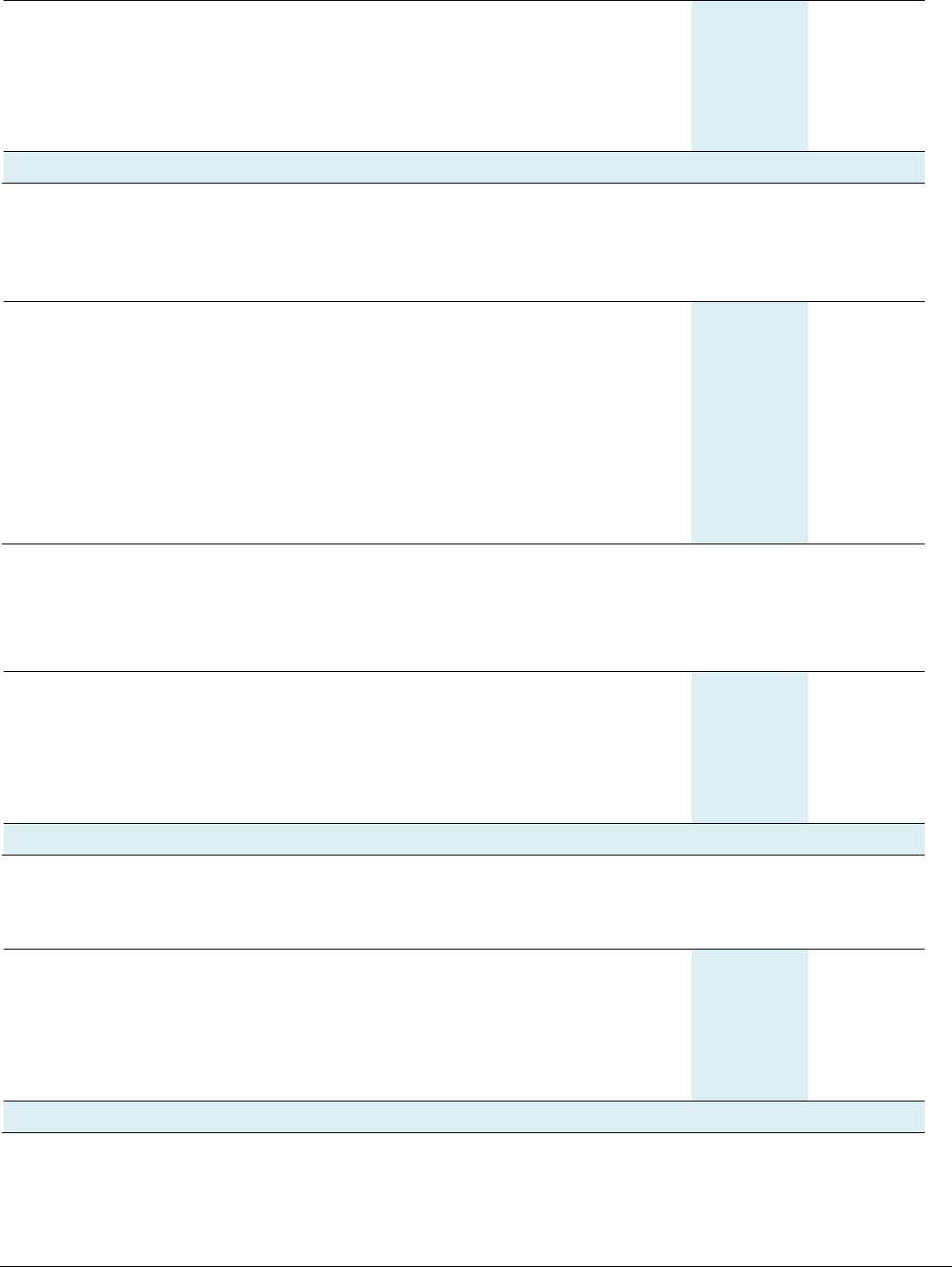
CIM | Report and Financial Statements 23
3. Analysis of turnover
2023
£’000
2022
£’000
Analysis by class of business:
Qualifications
3,145
3,420
Membership
3,669
3,890
Training
4,930
4,747
Conference Centre
2,210
1,543
13,954
13,600
4. Operating profit
2023
£’000
2022
£’000
This is arrived at after charging/(crediting):
Depreciation of tangible fixed assets
379
353
Fees payable to CIM's auditors for the audit of the CIM's annual accounts
42
40
Fees payable to the Group's auditors for other services to the Group:
Taxation compliance services
4
6
Defined contribution pension cost
305
221
5. Employees
2023
£’000
2022
£’000
Staff costs (including senior management) consist of:
Wages and salaries
6,019
5,707
Social security costs
638
607
Defined contribution pension cost
305
221
6,962
6,535
The average number of employees (including senior management) during the year was:
2023
Number
2022
Number
Qualifications
18
15
Membership
55
55
Training
22
22
Conference Centre
18
16
Administration
44
44
157
152
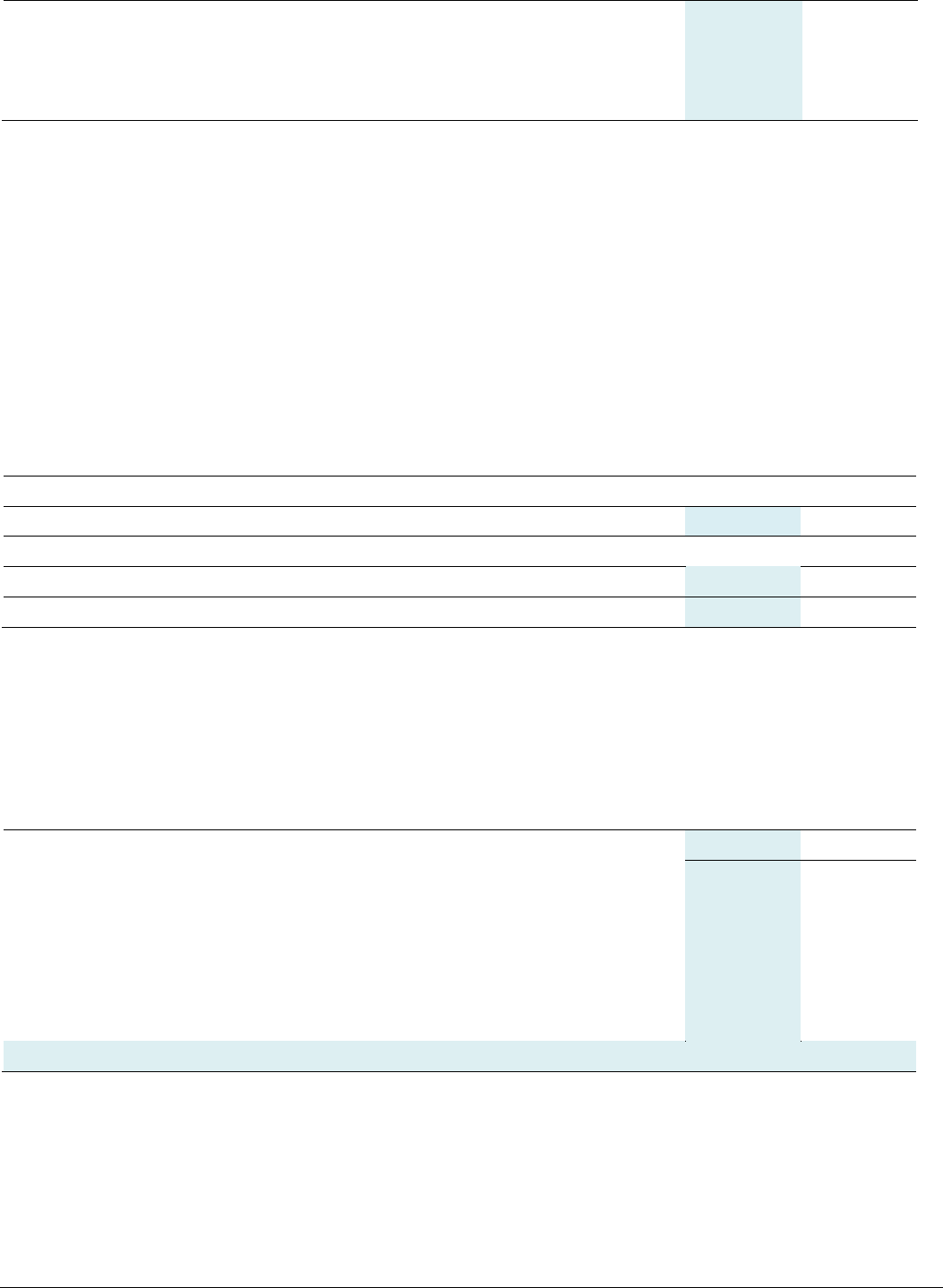
CIM | Report and Financial Statements 24
The number of higher paid employees was:
2023
Number
2022
Number
£80,001 - £110,000
1
4
£110,001 - £140,000
4
5
£140,001 - £170,000
3
1
>£170,001
1
-
The above remuneration bands include benefits-in-kind, bonuses and employers pension contributions.
No Directors received any remuneration or benefits from the Group.
Key management personnel include the Senior Management Team who together have authority and responsibility for
planning, directing and controlling the activities of the Group. The total compensation including employers pension
contributions paid to key management personnel for services provided to the Group was £1,061k (2022: £995k). The
increase in employers contributions year on year follows the introduction of salary sacrifice for pension contributions, so
contributions previously attributed to the employee are now falling under employer contributions.
6. Interest receivable and interest payable
2023
£’000
2022
£’000
Interest receivable
Interest receivable on short term deposits
23
6
Interest payable
Loans and overdrafts
(18)
(16)
Net interest receivable/(payable)
5
(10)
7. Taxation
There is no taxation payable for the current year. An analysis is shown below to reconcile the result for the year to the
tax charge:
2023
£’000
2022
£’000
Profit on ordinary activities before taxation
208
457
Tax on profit on ordinary activities at standard CT rate of 19.00%
43
87
Expenses not deductible for tax purposes
1,266
1,274
Income not taxable for tax purposes
(1,402)
(1,389)
Fixed asset differences
31
(14)
Remeasurement of deferred tax for change in tax rates
(14)
(13)
Deferred tax not recognised
76
55
Current tax charge/(credit)
-
-
No deferred tax assets are currently recognised on the balance sheet. CIM has unutilised cumulative tax losses of
£9,184,657 available to carry forward against future profits from commercial activities.

CIM | Report and Financial Statements 25
8. Parent company profit for the year
In accordance with permitted exemptions CIM has not presented its own profit and loss account in these financial
statements. The profit after tax of CIM itself for the year was £161k (2022: £423k - profit).
9. Tangible fixed assets
Freehold land
and buildings
£'000
Plant,
machinery
and vehicles
£'000
Computer
equipment
and software
£'000
Furniture,
fixtures and
equipment
£'000
Total
£'000
Cost or valuation
At 1 July 2022
5,764
1,779
2,215
402
10,160
Transfers
457
(457)
-
-
-
Additions
-
372
642
-
1,014
Disposals
-
(66)
-
-
(66)
At 30 June 2023
6,221
1,628
2,857
402
11,108
Depreciation
At 1 July 2022
470
879
1,269
309
2,927
Transfers
355
(355)
-
-
-
Charge for the year
91
102
152
34
379
Disposals
-
(66)
-
-
(66)
At 30 June 2023
916
560
1,421
343
3,240
Net book value
At 30 June 2023
5,305
1,068
1,436
59
7,868
At 30 June 2022
5,294
900
946
93
7,233
The freehold land and buildings are subject to a fixed charge as security for the Santander loan. All tangible fixed assets
are owned by CIM. On transition to FRS 102, CIM took the option of treating the previously revalued amount (at 30 June
2014) of freehold land and buildings as deemed cost. Transfers are the reclassification of plant to buildings.
10. Fixed asset investments
The Directors have considered the market value of the investment property at 30 June 2023 and following a professional
independent valuation received in July 2023 have increased the value of the investment property to £250,000. The gain on
this revaluation of £50,000 has been credited to the profit and loss account.
If the investment property had been accounted for under the historic cost accounting rules, the property would have been
measured as follows:
Group
and CIM
2023
£’000
Group
and CIM
2022
£’000
Historic cost
350
350
Accumulated depreciation
(63)
(56)
Net book value
287
294
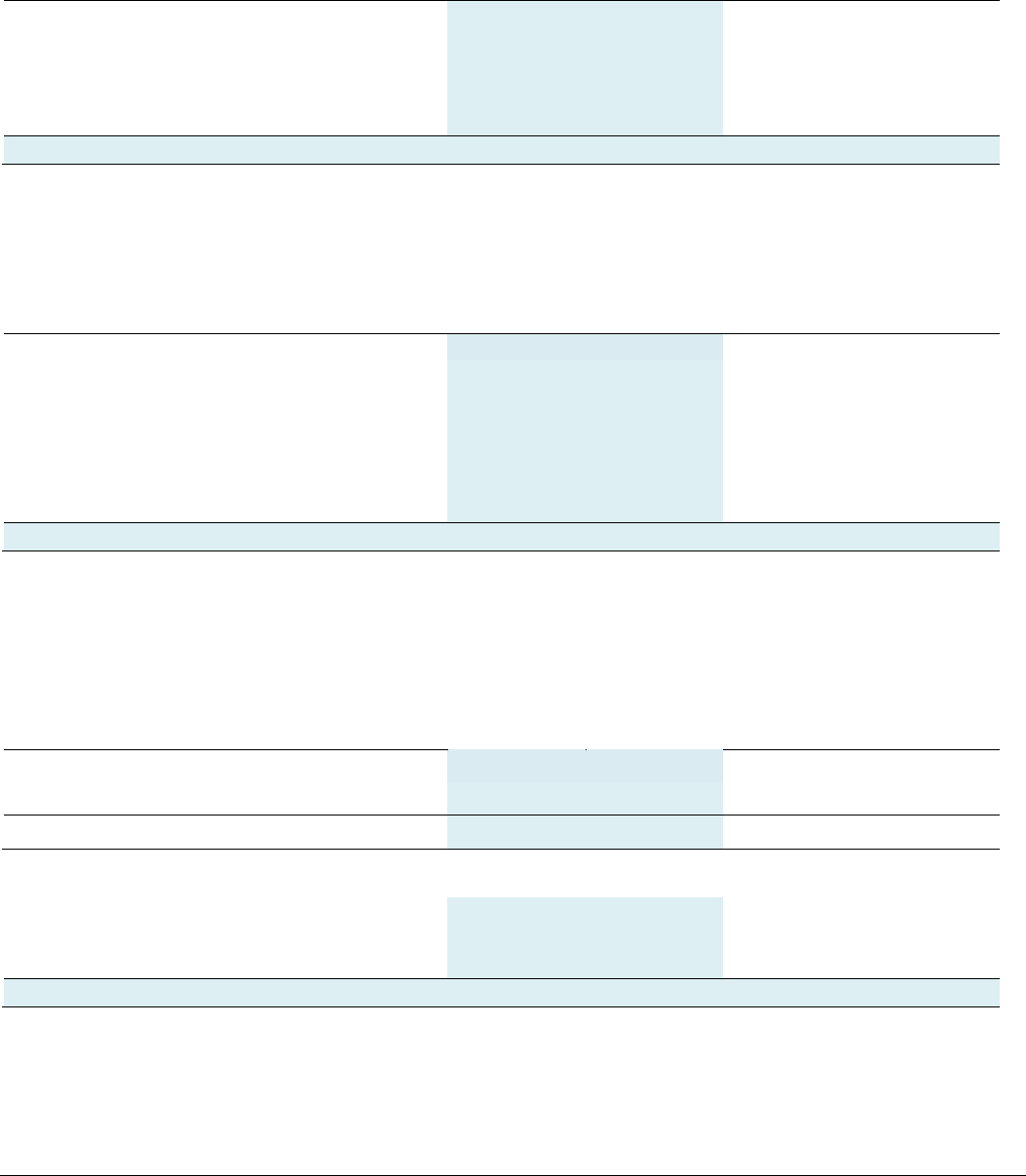
CIM | Report and Financial Statements 26
The following subsidiaries were active in the year and are 100% subsidiaries of CIM:
•
Communication Advertising & Marketing Education Foundation (CAM), incorporated in England
•
The Chartered Institute of Marketing Hong Kong Limited, incorporated in Hong Kong
•
CIM Enterprises Limited, incorporated in England
11. Debtors: Due within one year
2023
2022
Group
£’000
CIM
£’000
Group
£’000
CIM
£’000
Trade debtors
589
589
569
569
Owed by Group companies
-
118
-
113
Other debtors
45
45
27
27
Prepayments
353
353
228
228
Accrued income
23
23
18
18
1,010
1,128
842
955
12. Creditors: Amounts falling due within one year
2023
2022
Group
£’000
CIM
£’000
Group
£’000
CIM
£’000
Loan (see note 14)
227
227
227
227
Trade creditors
867
867
916
916
Owed to Group companies
-
10
-
10
Taxation and social security
283
283
242
242
Other creditors
76
76
62
62
Accruals
913
1,125
1,145
1,320
Deferred income
2,368
2,368
2,522
2,522
4,734
4,956
5,114
5,299
13. Creditors: Amounts falling due after more than one year
2023
2022
Group
£’000
CIM
£’000
Group
£’000
CIM
£’000
CAM Loan (see note 14)
-
500
-
600
Loans (see note 14)
227
-
227
227
227
500
227
827
The maturity of sources of debt finance was:
Within one year or on demand
227
227
227
227
In 1-2 years
-
500
226
827
In 2-5 years
-
-
-
-
227
727
453
1,054

CIM | Report and Financial Statements 27
14. Loans and Overdraft Facility
On 5 May 2019 CIM took out a £1.0m loan from Santander, which is secured on the freehold land and buildings at Moor Hall
and repayable by instalments over a term of 60 months. This term loan bears interest at 2.5% above the Bank of England
base rate.
On 26 August 2020 CIM took out a three-year £1,500,000 overdraft facility with Santander under the Government backed
Coronavirus Business Interruption Loan Scheme (CBIL Scheme), payable on demand with interest chargeable at 2.95% (0%
for the first 12 months) above the Bank of England base rate. This facility had not been utilised by the year end.
On 31 July 2022 £100,000 of the outstanding loan from CAM was repaid and a loan of £500,000 was renewed with CAM on
31 July 2022 for 2 years to 31 July 2024, at an interest rate of 4%.
15. Reconciliation of net cash flow to movement in net debt
Analysis of changes in net debt - Group
At 1 July 2022
£’000
Cashflow
£’000
At 30 June 2023
£’000
Santander Loan
(453)
226
(227)
Cash at bank and in hand
1,831
(1,252)
579
Total
1,378
(1,026)
352
Net debt is defined as the net of cash and cash equivalents, other financial assets, bank overdrafts, loan notes and
bank loans.
Reconciliation of net cash flow to movement in net debt - Group
2023
£’000
2022
£’000
(Decrease)/Increase in cash in the year
(1,026)
310
Net position at the beginning of the year
1,378
1,068
Net position at the end of the year
352
1,378
16. Pensions
CIM (the “Employer”) operates a closed defined benefit pension arrangement called the CIM Holdings Limited Retirement
Benefits Scheme (the “Scheme”). The Scheme provides benefits based on final salary and length of service on retirement,
leaving service or death. The Employer also operates a defined contribution scheme but this is not included in
these disclosures.
The Scheme is subject to the Statutory Funding Objective under the Pensions Act 2004. A valuation of the Scheme is carried
out at least once every three years to determine whether the Statutory Funding Objective is met. As part of the process CIM
must agree with the Directors of the Scheme the contributions to be paid to address any shortfall against the Statutory
Funding Objective.
The most recent comprehensive actuarial valuation of the Scheme was carried out as at 30 June 2020 and the next
valuation of the Scheme was due as at 30 June 2023. However, the Scheme Trustees are looking at buy-out and therefore
the actuarial valuation has not been carried out. The Employer expects to pay no contributions in the year to June 2024 as
the Scheme was in surplus at the previous actuarial date.
There were no plan amendments, curtailments or settlement during the period.
The assumptions used for calculating the liabilities were:
2023
2022
Discount rate
5.3%
3.7%
Inflation assumption (RPI)
3.3%
3.4%
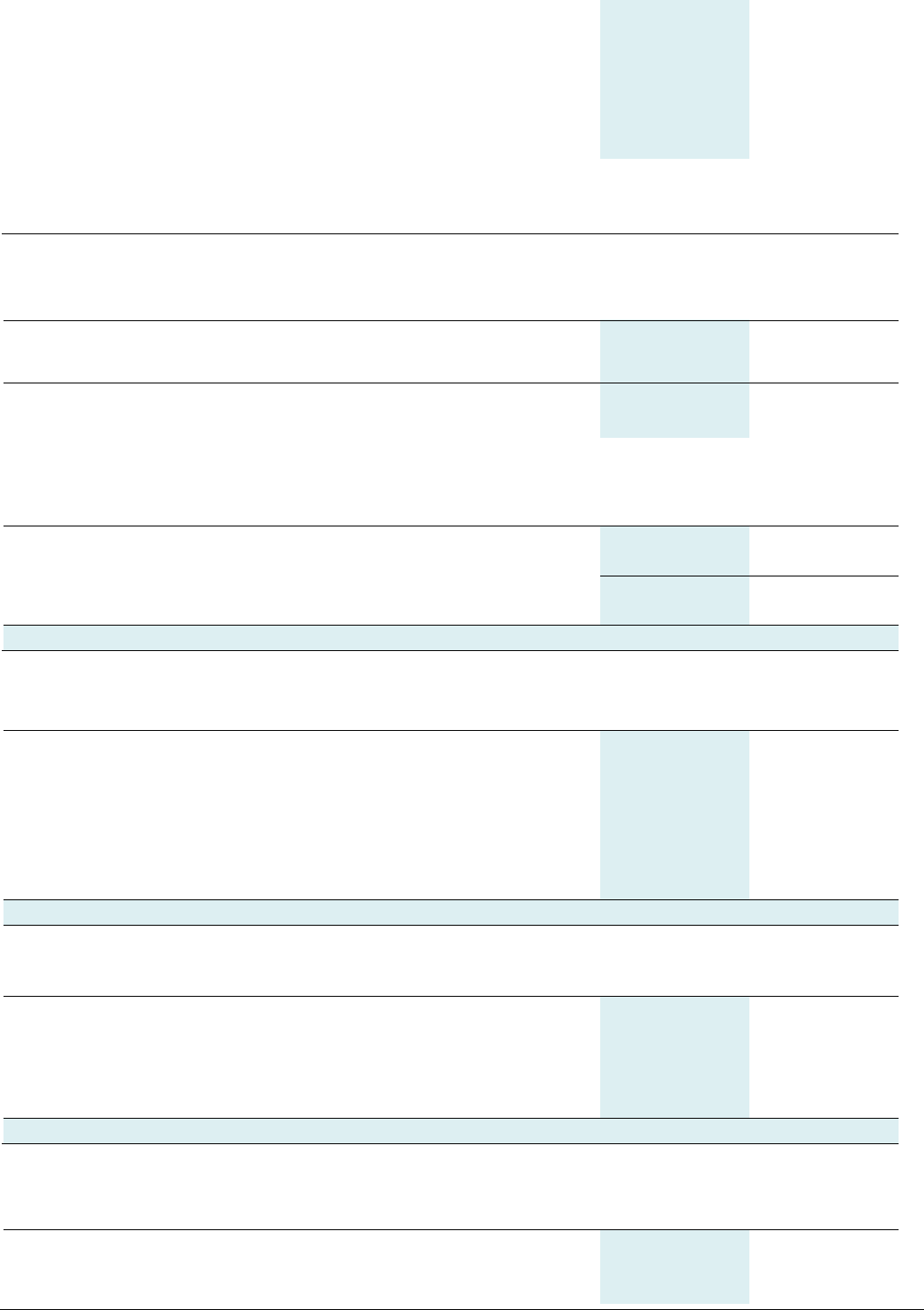
CIM | Report and Financial Statements 28
Inflation assumption (CPI)
2.7%
2.7%
Pre-1995 pension increases
5.0%
5.0%
Post 1995 pension increases
3.2%
3.3%
Post 1 July 2007 pension increases
2.3%
2.3%
Salary increases
2.8%
2.8%
Commutation - No allowance has been made for members to take tax free cash.
Expenses – Up until 30
th
April 2023 CIM met expenses directly. From 1
st
May 2023 these expenses have been met by the
Scheme.
Mortality assumptions
2023
2022
Mortality tables
S3NA CMI 2019
projections LTR
1.25%
S3NA CMI 2019
projections LTR
1.25%
Life expectancy of pensioners at age 65
Males:
22.4 years
22.3 years
Females:
24.8 years
24.7 years
Amounts recognised in the Balance Sheet
2023
£’000
2022
£’000
Fair value of assets
20,869
25,911
Present value of funded obligations
(16,571)
(20,206)
Surplus in scheme
4,298
5,705
Effect of asset ceiling
(4,298)
(5,705)
Net defined benefit asset / (liability)
-
-
Amounts recognised in the Profit & Loss Account
2023
£’000
2022
£’000
Current service cost
-
-
Administration costs
2
-
Interest on liabilities
733
492
Interest on assets
(944)
(594)
Past service cost
-
-
Settlement cost
-
-
Interest on effect of asset ceiling
211
102
Total charge to Profit and Loss
2
-
Re-measurements over the year
2023
£’000
2022
£’000
Losses on scheme assets in excess of interest
5,161
5,564
Experience losses on liabilities
528
-
(Gains) from changes to financial assumptions
(4,073)
(5,826)
Losses / (Gains) from change in effect of asset ceiling
(1,618)
262
Total re-measurements
(2)
-
Change in value of assets over the period
2023
£’000
2022
£’000
Fair value of assets at start
25,911
31,617
Interest on assets
944
594
Benefits paid
(823)
(736)
A
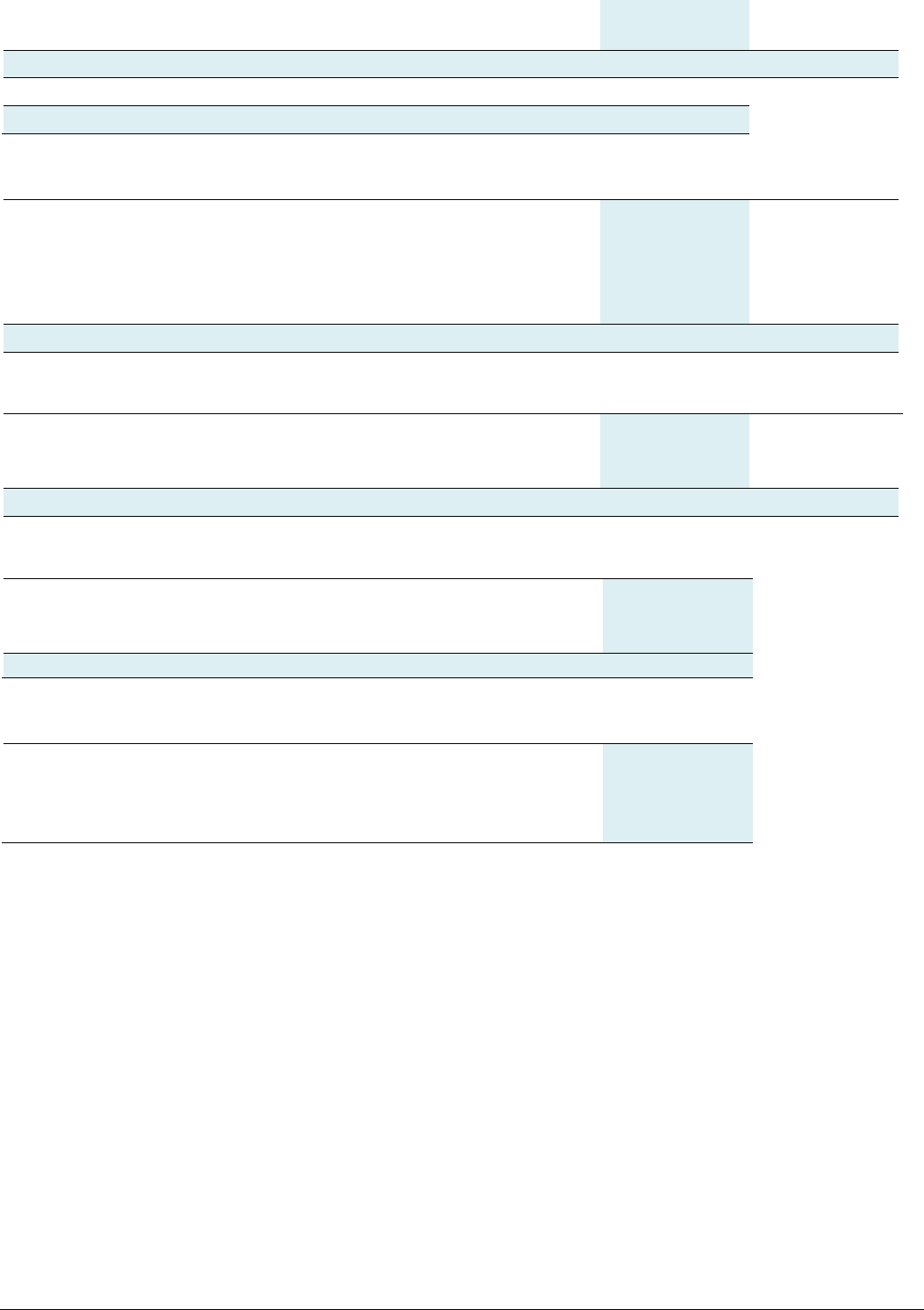
CIM | Report and Financial Statements 29
Administration costs
(2)
-
Actuarial (loss)
(5,564)
(5,564)
Fair value of assets at end
20,869
25,911
Actual return on assets
(4,217)
Change in value of the DB liabilities
2023
£’000
2022
£’000
Value of liabilities at start
20,206
26,276
Interest cost
733
492
Benefits paid
(823)
(736)
Experience loss on liabilities
528
-
Actuarial (gain) due to changes in financial assumptions
(4,073)
(5,826)
Value of liabilities at end
16,571
20,206
Reconciliation of effect of asset ceiling
2023
£’000
2022
£’000
Effect of asset ceiling at start
5,705
5,341
Interest on effect of asset ceiling
211
102
Actuarial (gains) / losses
(1,618)
262
Effect of asset ceiling at end
4,298
5,705
Assets - the current asset split is as follows:
2023
Equities / growth assets
3,959
Swaps
4,964
Cash
11,946
Total assets
20,869
Sensitivity of the value placed on the liabilities
2023
Discount rate -0.25%
529
Inflation +0.25%
317
Salary increases +0.25%
32
Long term rate of mortality improvements +0.25%
129
Note that the above sensitivities are approximate and only show the likely effect of an assumption being adjusted in
isolation.
17. Contingent liabilities
There are no contingent liabilities.
18. Post balance sheet events
On 18
th
August 2023, a 15 year mortgage for £1.5m has been provided by HSBC Bank secured against Moor Hall at an
interest rate of 2.75% above the Bank of England Base Rate. The balance on the previously secured loan from Santander
of £227k has been repaid in full. The CBILS overdraft facility referred to in Note 14 was cancelled on 18
th
August 2023.

CIM | Report and Financial Statements 30
19. Capital commitments
2023
2022
Group
£’000
CIM
£’000
Group
£’000
CIM
£’000
Capital: contracted, but not provided for
-
-
-
-
The contracted capital relates to the development and replacement of the commercial IT systems.
20. Related party disclosures
The ultimate controlling party of the Group is CIM. As at 30 June 2023, CIM owed (a) CAM £500,000 (2022: £600,000),
£18,000 of transactions during the year were solely interest receivable from CIM, in addition CIM owed CAM £196,000 of
accrued interest and conversely CAM owed CIM £113,000 and (b) £10,000 (2022: £8,000) to The Chartered Institute of
Marketing Hong Kong Limited (CIM HK), and (c) CIM Enterprises Limited owe CIM £14,000 (2022:£7,000).
There were no transactions with any senior member of the management team this year (2022: £0).
